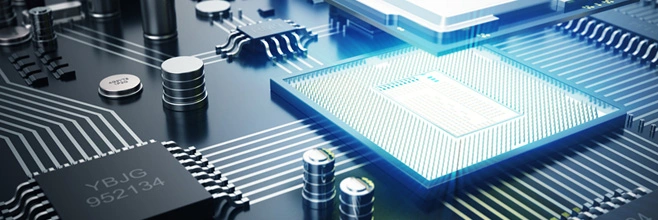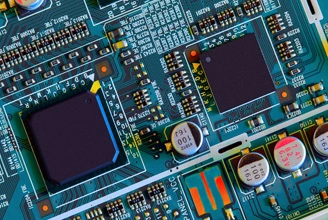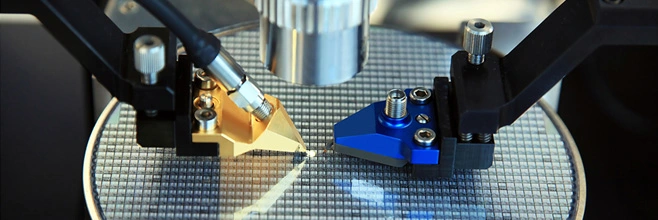Ultraviolet curing technology (UV technology) is to add a UV photoinitiator (or photosensitizer) to a specially formulated system (called a photocuring system) to generate active free radicals or cations after absorbing ultraviolet rays (UV), thereby initiating polymerization, Cross-linking and grafting reactions, making it from liquid to solid technology. Photoinitiator for UV curing technology is an environmentally friendly and cost-effective option because there is no need to remove water at the end of the printing or coating process, and there is no need to capture or incinerate solvents.
UV curing materials are widely used in optical fiber cables (UV curing optical fiber coating materials), printed circuit boards (UV curing photoresists), home appliances (plastic coatings, metal coatings), automotive parts (transparent varnishes, repair paints, reflector lampshades etc.), printing packaging (UV curing inks), wooden furniture and flooring (UV curing coatings).
Types of Photoinitiators are compounds that generate free radicals upon exposure to ultraviolet light. These photoinitiator types then react with monomers and/or oligomers, initiating the polymerization process. The radical photoinitiator is used extensively with crosslinkable monomers and oligomers in UV-curable inks and coatings, adhesives, and many other products.
Photoinitiator types can be divided into two categories: free radical photoinitiators and cationic photoinitiators.
TINTOLL is one of the leading photoinitiator manufacturers and suppliers, which is also one of the cornerstone businesses of TINTOLL. Our product portfolio covers free radical and cationic photoinitiators (photo-acid generators) as well as amine synergists. UV-curable materials are widely used in graphic arts, industrial coatings, adhesives, printed circuit boards, and 3D printing. TINTOLL provides photoinitiator types for UV curing application support, product development and custom solutions, and collaborates with customers to develop next-generation photoinitiators.
Photoinitiators are mainly divided into two classes: Type I and Type II. Type I photoinitiators undergo a unimolecular bond cleavage when exposed to light, which splits them into two primary radicals. Type I photoinitiators, which includes include benzophenone, benzoin ether, and 2-(dimethylamino)ethanol (DMAE), produce reactive intermediates directly after light absorption and don't require any other compound to work.
Type II photoinitiators, which include benzophenones and thioxanthones, undergo a bimolecular reaction and require a second compound, called a co-initiator, to produce reactive intermediates. The initiation process for Type II photoinitiators is generally slower than Type I because it's based on a bimolecular reaction.
Photoinitiators are activated by absorbing energy from ultraviolet or visible light. This causes the visible light photoinitiators to decompose and form free radicals or protic acids.
The free radicals then react with monomers and oligomers to form new free radicals. These free radicals become part of the resulting polymer.
The polymeric photoinitiator is used in UV-curable inkjet formulations. These photoinitiator types are designed to absorb light and convert light energy into chemical energy. The chemical energy of this stabilizer in polymer can initiate or catalyze the crosslinking process, which causes the ink to dry quickly.
Photoinitiators can be activated by adding photosensitizers. Photoinitiator types including type i photoinitiator absorb incident light more efficiently and can use visible light to activate photoinitiators to generate free radicals.

The photoinitiator for UV curing should have high absorption at the exposure wavelength.

The most common wavelengths are 365nm, 385nm, 395nm and 405nm. 365nm is the most common wavelength. 385nm and 395nm are commonly used in inkjet printing. 395nm and 405nm are common wavelengths for curing thick coating materials.

Free radicals of radical photoinitiator should be highly reactive towards monomers.

The combination of multiple photoinitiators types like acrylated amine synergist can initiate curing in different wavelength ranges, which is faster than a single photoinitiator.

Alpha-aminoketone type initiators (PowerCure 369, PowerCure 907) and BAPO type (PowerCure 819) are usually the photoinitiators types of choice because of their absorption properties extending into the short visible region of the UV spectrum.
Photoinitiators are molecules that absorb light and convert it into chemical energy. When exposed to light, the photoinitiator splits into two reactive free radicals. These free radicals initiate chain polymerization of photosensitive resins and reactive diluents. The polymerization reaction causes the adhesive to crosslink and cure.
Photoinitiator types are key components of photopolymers and include: Light curing coating, Adhesive, Dental Restoration Materials etc.
These photoinitiator types are also used in UV-curable inkjet formulations. They absorb light and convert it into chemical energy to produce active substances. These substances can initiate or catalyze the crosslinking process, which causes the ink to dry quickly.
Photo sensitizer is used to prolong the wavelength absorbed by the photoinitiator.